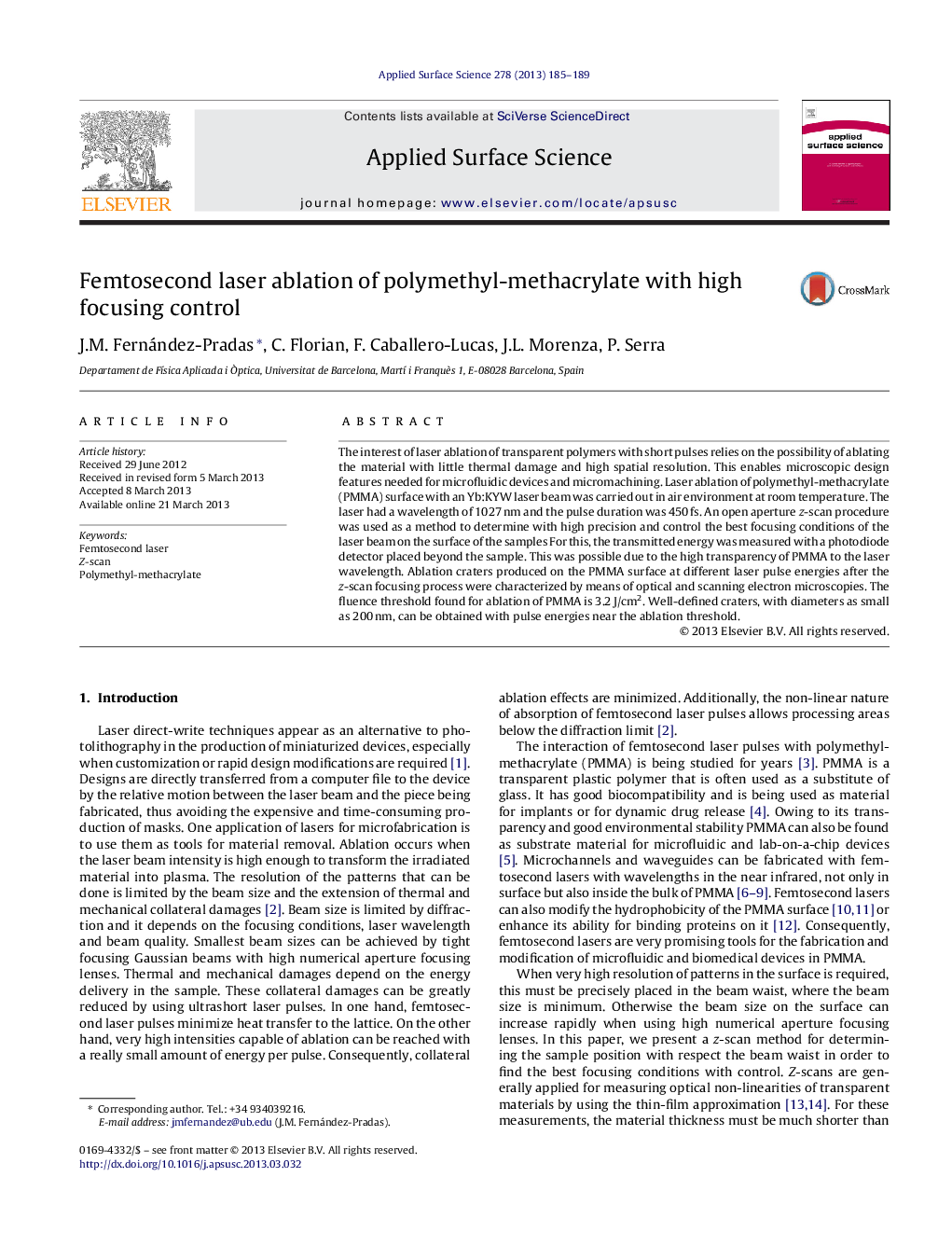| Article ID | Journal | Published Year | Pages | File Type |
|---|---|---|---|---|
| 5353273 | Applied Surface Science | 2013 | 5 Pages |
Abstract
The interest of laser ablation of transparent polymers with short pulses relies on the possibility of ablating the material with little thermal damage and high spatial resolution. This enables microscopic design features needed for microfluidic devices and micromachining. Laser ablation of polymethyl-methacrylate (PMMA) surface with an Yb:KYW laser beam was carried out in air environment at room temperature. The laser had a wavelength of 1027Â nm and the pulse duration was 450Â fs. An open aperture z-scan procedure was used as a method to determine with high precision and control the best focusing conditions of the laser beam on the surface of the samples For this, the transmitted energy was measured with a photodiode detector placed beyond the sample. This was possible due to the high transparency of PMMA to the laser wavelength. Ablation craters produced on the PMMA surface at different laser pulse energies after the z-scan focusing process were characterized by means of optical and scanning electron microscopies. The fluence threshold found for ablation of PMMA is 3.2Â J/cm2. Well-defined craters, with diameters as small as 200Â nm, can be obtained with pulse energies near the ablation threshold.
Related Topics
Physical Sciences and Engineering
Chemistry
Physical and Theoretical Chemistry
Authors
J.M. Fernández-Pradas, C. Florian, F. Caballero-Lucas, J.L. Morenza, P. Serra,
